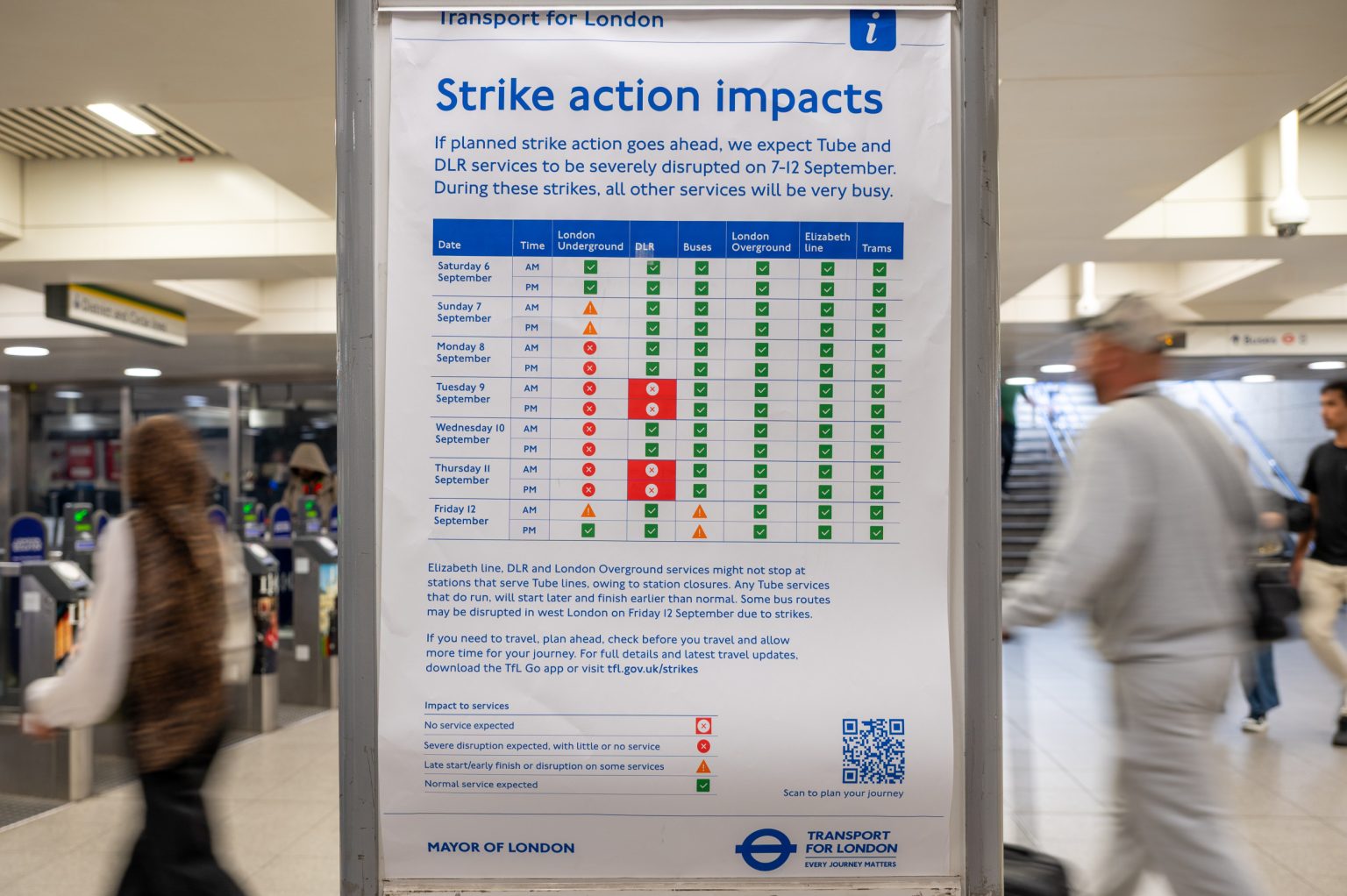London Underground Strikes Bring Capital to a Standstill
The heart of London’s transportation system has ground to a near halt as thousands of London Underground staff began rolling strike action on Sunday, initiating what promises to be one of the most disruptive work stoppages in recent memory. The strikes, organized by the Rail, Maritime and Transport (RMT) union, will severely impact the capital’s subway network through Thursday, affecting millions of commuters, tourists, and businesses that rely on the extensive Tube network. At the center of the dispute are fundamental concerns about working conditions, compensation, and quality of life for transport workers who keep one of the world’s most famous public transit systems running around the clock. Union representatives emphasize that their members are responsible for facilitating approximately 5 million passenger journeys every day, operating with 2,000 fewer staff since the COVID-19 pandemic while facing increasing levels of abuse and violence. The current industrial action stems from demands to reduce the contracted working week from 35 hours to 32, alongside concerns about pay, fatigue management, and shift patterns—demands that Transport for London (TfL) claims it cannot afford while offering a 3.4 percent pay rise instead.
The significance of this strike extends far beyond inconvenienced travelers. The London Underground represents a vital artery for the city’s economic and social life, with economic impact models estimating direct losses could exceed £230 million (approximately $3.6 million) during the strike period. Major events have already felt the impact, with high-profile concerts by artists including Coldplay and Post Malone being postponed and rescheduled. The RMT has strategically organized staggered walkouts across different staff groups and days, maximizing disruption while highlighting the essential nature of their members’ work. Transport for London’s stark warning that “little to no Tube service is expected” between Monday and Thursday underscores the severe impact of the strike, with officials advising passengers to complete journeys by early evening on strike days and warning that while other services like the Elizabeth Line and London Overground will continue to operate, they will be significantly more crowded than usual.
The human dimension of this dispute reveals the growing tension between front-line workers and management in essential public services. RMT representatives describe a workforce feeling increasingly stretched and undervalued, pointing to a reduction of approximately 2,000 Underground staff since 2018 and deteriorating shift patterns that they believe contribute to fatigue and safety concerns. Jared Wood, RMT London Transport regional organizer, articulated the union’s position clearly when speaking to the BBC: “They want some promises that have been made in previous pay rounds to be honored, and we want a change in direction.” Wood emphasized the union’s desire for progress toward a 32-hour work week, highlighting the contrast between workers’ conditions and management benefits. He noted that “senior directors have had up to 22 percent pay raises this year alone” while drawing attention to TfL’s own statements celebrating “an extraordinary chapter in its history” with three years of successive operational services. The fundamental question seems to be about fair distribution of rewards in a successful public service—as Wood put it, “What our members are saying is they just want a little bit of that recognized.”
The response from Transport for London presents a starkly different perspective on the dispute. Claire Mann, TfL’s chief operating officer, has characterized their offer as “fair and affordable” and expressed disappointment that the RMT is “planning to disrupt Londoners without giving their members a say on the offer.” TfL maintains that their proposed pay deal aligns with other offers accepted by the RMT across the rail industry, suggesting the union’s position is unreasonable in the current economic context. The organization has called on the RMT to suspend the action and continue discussions, emphasizing the impact on millions of Londoners who rely on the Underground for daily transportation. The standoff illustrates the classic tension in labor disputes between financial constraints cited by management and workers’ demands for improved conditions that they consider both reasonable and necessary for sustainable service delivery.
The immediate practical impact of the strikes is being felt across London, with photos showing illuminated warning signs at stations and travelers scrambling to find alternative routes. While the Elizabeth Line, London Overground, and National Rail services continue to operate, they face unprecedented pressure as commuters seek alternatives to their usual Underground journeys. TfL has advised travelers to check live service updates, allow extra travel time, and consider options such as cycling or walking where feasible. The phased nature of the strike means that disruption will vary throughout the week, with services expected to gradually return to normal only by Friday morning. For tourists visiting the capital, the timing could hardly be worse as September represents a significant month for tourism, with many international visitors finding themselves unexpectedly unable to navigate the city through its most efficient transportation network.
As of Sunday, no fresh negotiations had been scheduled between TfL and the RMT, suggesting that the full impact of the planned disruption is likely to materialize. The union has called on London Mayor Sadiq Khan to intervene in the dispute, recognizing the political dimension of a crisis affecting millions of the capital’s residents and visitors. The standoff raises broader questions about the valuation of essential workers in post-pandemic society, the sustainability of public transport funding models, and the balance between operational efficiency and workforce wellbeing. For Londoners and visitors alike, the immediate reality is one of significant disruption, with the familiar instruction to “mind the gap” temporarily replaced by a much larger gap in service altogether. As the week progresses, both sides will face increasing pressure to find a resolution that addresses workers’ concerns while restoring the vital transportation network that keeps London moving.


